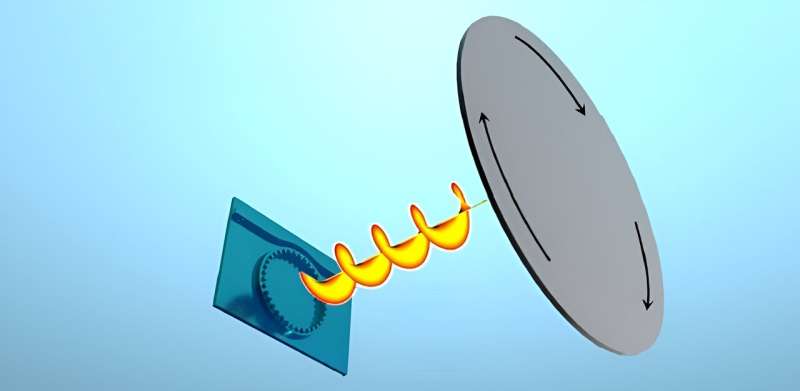You may not be aware of it, but the Doppler effect is everywhere in our lives, from tracking the speed of cars with radar to determining the position of satellites in the sky. It’s all about how the waves change their frequency when the source (like a radar signal) and the detector move relative to each other. But traditional radar systems hit a snag when trying to detect objects moving at right angles to radar signals. This limitation forced researchers to explore a completely new approach.
Imagine a radar system that does not rely solely on line waves, but instead uses orbital angular momentum (OAM) helical electromagnetic waves. These special “vortex” waves have a spiral twist and create the characteristic spinning Doppler effect when they collide with a rotating object.
To improve the identification and detection of these swirling Doppler effects, researchers at Shanghai University of Science and Technology (USST) used terahertz (THz) waves to develop an integrated THz vortex beam emitter, as reported in Advanced. photonics.
According to the paper’s corresponding author, USST Professor Yiming Zhu, “To our knowledge, this work represents the first demonstration of an integrated THz vortex beam emitter specifically designed for the detection of rotating targets.”
THz waves are uniquely suited for high-resolution radar imaging. They are between microwaves and infrared waves in terms of frequency and have a unique ability to penetrate a variety of materials with minimal risk of damage. Although THz waves hold great promise, they face their own challenges, such as low efficiency and instability issues.
Correct determination of rotation speed
Exploring the possibilities of practical and tunable THz vortex emitters with associated detection schemes, the research team developed a new approach that combines positively and negatively charged vortex beams with an integrated THz emitter. By changing the frequency of these vortex beams, they can produce radar signals that accurately measure the speed of a rotating object. This invention offers a way to determine the rotation speed of an object extremely precisely, with a maximum error of only about 2 percent.
Their design involves frequency manipulation to access different resonances in the beam emitter cavity; this allows the generation of vortex beams with a topological charge of ±1. These vortex beams then illuminate the rotating object, and the echo of the resulting light waves can be received directly by a linearly polarized antenna. Due to the effective identification and detection of the rotating Doppler effect in the frequency spectrum, accurate measurement of the rotation speed of the object is possible.
The team has also reportedly overcome a difficult polarization problem, making this radar system well-suited for detecting rotation in the THz frequency range.
This innovative radar technology opens up exciting possibilities for a wide range of applications. Not only does it have the potential to improve radar target detection, but it can also offer new countermeasures for tactical military defense. It is also cost-effective and scalable; This means we may see this cutting-edge technology sooner than we think.
Source: Port Altele
